#20 September 1777
Text














The Battle of Paoli (also known as the Battle of Paoli Tavern or the Paoli Massacre) was a battle in the Philadelphia campaign of the American Revolutionary War fought on September 20, 1777,
#Battle of Paoli#Battle of Paoli Tavern#Battle of Paoli Tavern or the Paoli Massacre#Paoli Massacre#20 September 1777#American Revolutionary War#American War of Independence#Paoli Battlefield Site and Parade Grounds#Mid-Atlantic region#Chester County#Chesco#Paoli Massacre obelisk#Malvern#Philadelphia campaign#Pennsylvania#summer 2019#free admission#travel#original photography#vacation#tourist attraction#USA#landmark#landscape
1 note
·
View note
Note
What can we expect from 2024 dear!?? 😌
2024 has a lot going on; there are so many astrological transits happening that have a huge impact on all of us.
January 1, 2024: Mercury went direct after being in retrograde for several weeks. This means communication gets better, legal documents can be signed without issues, and anything related to speech is cleared up.
January 20 - September 1, 2024: Pluto enters Aquarius. This is going to be a wild ride. The last time Pluto was in Aquarius was around the late 1700's, and during that time, the world underwent MASSIVE change. Both the American and French Revolutions occurred, coups happened with governments, royalty was dethroned, battles and wars were fought, the first wave of feminism began, etc. There's so much more than this. You should see the list. I'll include it here--start around 1777 and go through 1798. Pluto represents death, rebirth, and transformation, while Aquarius represents humanity and technology. When you pair these two, you're looking at major transformation socially, politically, economically, and technologically. There's a brief retrograde into Capricorn for one last time during our lifetime, and then Pluto will return to Aquarius for another 20 years. It's interesting to note that the rise and fall of empires throughout history is around 250 years. The cycle for Pluto is 245 years. Coincidence? I think not.
February 16, 2024: A stellium in Aquarius. A stellium occurs when three or more planets are in the same house/sign in an astrological chart. This Aquarius stellium will feature Sun, Mercury, Venus, Mars, and Pluto. The last time this occurred was in February, 1962, and was commonly referred to as the "Age of Aquarius." This time period brought about major changes in the fields of technology, science, and aerospace. I'm afraid that during this time, though, there will be a strong focus on AI and its advancement. Pay attention to headlines regarding an upgrade in technology.
March 25, 2024: Lunar eclipse in Libra. Major historical events typically coincide with lunar eclipses, and since this one will be in Libra, I foresee society wishing for balance, harmony, peace, and justice. I believe this will be a time that humanity will call for us to take a deeper look at how we can end strife and get along with each other. Be ready for major calls for wars and upheaval to end (even though it's happening now, this will be on a much larger scale with this eclipse).
April 8, 2024: Solar eclipse in Aries. On the flip side of the lunar eclipse, we have the solar eclipse in Aries. This will be a time where we start anew and are ready to charge down a new path. Mars' energy represents war, destruction, violence, revenge, but also strength. This particular eclipse is warning us about war and destruction on a collective level because it'll be conjunct the North Node (the direction we're all going). I believe we're headed into a total collapse and rebirth when we add in the Pluto in Aquarius energy, but it's something that needs to happen for us to evolve as a civilization.
May 25, 2024: Jupiter in Gemini, which is actually in detriment. This means the energy is weaker in this sign for the planet. Expect changes in telecommunications (voice, data, and video) and social media, since Gemini is ruled by Mercury, the planet of communication.
June 2, 2024: Neptune is anaretic. Anaretic means that a planet has entered the 29th degree, which holds a sense of finality because this planet has transited all 30 degrees (starting at 0). It's ready to move on and cut ties. What does this mean for Neptune? Well, the planet of illusions will lift its veil and a lot of what we've held onto in our beliefs will die out. Some people will still try to hold on (sunk-cost fallacy) because they're stubborn, but the majority of people will release, mourn, and deal with the fallout that's going to be super messy. Imagine the feeling of being betrayed by someone you love. That's what Neptune lifting it's veil is going to feel like for most. Again, collectively, we NEED this energy for healing and spiritual growth.
July 21, 2024: Full Moon in Capricorn. Most of the time, nothing major happens on full moons, but this one is interesting because it falls on an anaretic degree, just like Neptune. Capricorn represents structure, discipline, rigidity, and order (its ruler is Saturn), so we're going to see some upheaval in regards to these issues. The old way of doing things will no longer serve the same purpose. This is the equivalent of saying, "Out with the old, in with the new."
August 5, 2024 – August 28, 2024: Mercury Retrograde in Virgo and Leo. With Mercury rx in Virgo, this might be a time where you lose or misplace documents, feel irritated, have constant miscommunication, or face scrutiny from the general public. Remember to write down important deadlines and keep everything organized so you don't lose anything. With Mercury rx in Leo, I'm fully expecting some celebrity scandals during this time. Otherwise, it'll be a time of thinking about trying something new or wanting to get out and do something fun.
September 17, 2024: Lunar Eclipse in Pisces. This will happen in the 25th degree (an Aries degree), so anyone with heavy Pisces placements will have creative breakthroughs during this time. We'll see a rise in great music, art, poetry and literature, as well as film and visual arts. This time period might feel very dreamy and whimsical on the art scene.
October 2, 2024: Solar Eclipse in Libra. We had the lunar eclipse in Libra in March, so now, the solar eclipse will bring justice and balance. Anyone with Libra placements in early degrees will feel the need to purge what's not working. Even though most Librans are peaceful, this will be a time of upheaval. Expect people to help the oppressed even more (seeking justice) in a world that needs to be more fair and balanced (Libra energy).
November 19, 2024: Pluto goes direct in Aquarius for twenty years, until March 8, 2043. Buckle up! It's going to be a bumpy-but-necessary ride.
November 25, 2024 – December 15, 2024: Mercury Retrograde in Sagittarius. We all know what happens during Mercury rx, but what happens when it's in Sagittarius? Sagittarius represents higher education and learning, all things foreign and travel-related, religion, and spirituality. Expect religious or spiritual leaders, as well as educational leaders at universities, to have private documents leaked, misinformation stemming from foreign countries and media, as well as travel issues (delays, being rerouted, lots of crowds, etc.). This will not be a good time to travel.
December 6, 2024 – February 24, 2025: Mars Retrograde in Cancer and Leo. This is going to be...interesting. Mars hates being in Cancer; it's in detriment. Why? Cancer represents empathy and compassion, while Mars represents a more masculine energy that strives towards war, violence, and destruction. Cancer wants to provide a resolution to all of the conflict occurring, while Mars isn't having it. Expect masculine energies, especially men, to be more irritated and aggressive during this time. This duo can bring about discussion regarding balancing masculine and feminine energy, which we all have. Because Cancer is represented by the Moon, or the "mother" in astrology, expect some discussions about fertility and reproduction, birth rates (especially the low birth rates of some countries), marriage (or lack thereof), and any social dynamics with males and females. These discussions will carry over into 2025.
2024 is going to be a year that'll go down in history, that's for sure. One silver lining in all of this is that Venus does NOT retrograde this year, so we might see or hear about fewer breakups, and we might see or hear about more people entering into relationships and staying together.
#astrology#2024 astrology#2024 transits#mercury retrograde#pluto in aquarius#jupiter in gemini#anaretic neptune#full moon in capricorn#lunar eclipse in pisces#solar eclipse in libra#lunar eclipse in libra#solar eclipse in aries#aquarius stellium#mars retrograde
164 notes
·
View notes
Text
Turn Week 2024: Day 6 - Cross-Over/International Kissing Day
I do not have anything to contribute to Cross-Overs … but I thought to capitalize on the 6th being International Kissing Day!
Kiss our dear Henriette twenty times for me.
The Marquis de La Fayette to his wife Adrienne, March 7, 1777.
Idzerda Stanley J. et al., editors, Lafayette in the Age of the American Revolution: Selected Letters and Papers, 1776–1790, Volume 1, December 7, 1776–March 30, 1778, Cornell University Press, 1977, p. 27.
Kiss our little Anastasie a million times. Alas, she is all that is left to us. I feel that my once divided fatherly affection is now completely for her; take great care of her.
The Marquis de La Fayette to his wife Adrienne, June 16, 1778
Idzerda Stanley J. et al., editors, Lafayette in the Age of the American Revolution: Selected Letters and Papers, 1776–1790, Volume 2, April 10, 1778–March 20, 1780, Cornell University Press, 1979, p. 79.
Ah, my dear heart, when shall I be close to you? When shall I be able to kiss you a hundred times?
The Marquis de La Fayette to his wife Adrienne, September 13, 1778
Idzerda Stanley J. et al., editors, Lafayette in the Age of the American Revolution: Selected Letters and Papers, 1776–1790, Volume 2, April 10, 1778–March 20, 1780, Cornell University Press, 1979, p. 173.
A thousand and thousand tender kisses for my dear Anastasie, and a big hug for George. Farewell, my love.
The Marquis de La Fayette to his wife Adrienne, May 6, 1780.
Idzerda Stanley J. et al., editors, Lafayette in the Age of the American Revolution: Selected Letters and Papers, 1776–1790, Volume 3, April 27, 1780–March 29, 1781, Cornell University Press, 1980, p. 10.
My Most Respectfull and Affectionate Compliments to Mrs. Knox; I am so impudent as to take the liberty to Adress a kiss to Lucy-and a paternal one to My Son. Adieu Yours forever
The Marquis de La Fayette to General Henry Knox, August 18, 1781.
Idzerda Stanley J. et al., editors, Lafayette in the Age of the American Revolution: Selected Letters and Papers, 1776–1790, Volume 4, April 1, 1781–December 23, 1781, Cornell University Press, 1981, p. 334.
My Best Respects Wait Upon Mrs. Knox, and Miss Lucy. I most affectionately and fatherly kiss my Son Harry.
The Marquis de La Fayette to General Henry Knox, January 8, 1784.
Idzerda Stanley J. et al., editors, Lafayette in the Age of the American Revolution: Selected Letters and Papers, 1776–1790, Volume 5, January 4, 1782‑December 29, 1785, Cornell University Press, 1983, p. 188.
My most affectionate tender Respects wait Upon Mrs Washington—I Beg she will give a kiss for me to the little girls, my friend tub
The Marquis de La Fayette to George Washington, December 21, 1784
“To George Washington from Lafayette, 21 December 1784,” Founders Online, National Archives, https://founders.archives.gov/documents/Washington/04-02-02-0167. [Original source: The Papers of George Washington, Confederation Series, vol. 2, 18 July 1784 – 18 May 1785, ed. W. W. Abbot. Charlottesville: University Press of Virginia, 1992, pp. 226–228.]
Chevalier de Caraman presents His Best Respects to Mrs Washington and to You—I kiss Squire tub, and the young ladies.
The Marquis de La Fayette to George Washington, March 19, 1785.
“To George Washington from Lafayette, 19 March 1785,” Founders Online, National Archives, https://founders.archives.gov/documents/Washington/04-02-02-0305. [Original source: The Papers of George Washington, Confederation Series, vol. 2, 18 July 1784 – 18 May 1785, ed. W. W. Abbot. Charlottesville: University Press of Virginia, 1992, pp. 449–451.]
My Best Respects Wait on Mrs. Hamilton. I kiss Phil, and the Young lady. Adieu Your affectionate friend
The Marquis de La Fayette to Alexander Hamilton, April 13, 1785.
Idzerda Stanley J. et al., editors, Lafayette in the Age of the American Revolution: Selected Letters and Papers, 1776–1790, Volume 5, January 4, 1782‑December 29, 1785, Cornell University Press, 1983, p. 318.
My Most affectionate Respects Wait upon Mrs. Knox, Miss Lucy, all the family. I kiss my God Son.
The Marquis de La Fayette to General Henry Knox, May 11, 1785.
Idzerda Stanley J. et al., editors, Lafayette in the Age of the American Revolution: Selected Letters and Papers, 1776–1790, Volume 5, January 4, 1782‑December 29, 1785, Cornell University Press, 1983, p. 322.
Adieu, my good friend, my most affectionate Respects to Mrs. Knox, and a kiss to Lucy, my Son, and the little one. Your affectionate friend
The Marquis de La Fayette to General Henry Knox, June 12, 1785.
Idzerda Stanley J. et al., editors, Lafayette in the Age of the American Revolution: Selected Letters and Papers, 1776–1790, Volume 5, January 4, 1782‑December 29, 1785, Cornell University Press, 1983, p. 330.
#turn week#turn week 2024#marquis de lafayette#la fayette#lafayette#letters#founders online#adrienne de lafayette#adrienne de noailles#georges de lafayette#anastasie de lafayette#henry knox#george washington#alexander hamilton#1777#1778#1780#1781#1784#1785#day 6#international kissing day#henriette de lafayette#french history#american history#history#american revolution#turn washington's spies
22 notes
·
View notes
Text
EIGHT SURVIVING CHILDREN OF CARLO AND LETIZIA BONAPARTE, SIBLINGS OF NAPOLEON I 🥺🌟♥️

254 years ago on this day, Napoleon Bonaparte, the first French emperor was born
On the occasion of his birthday, meet the Eight surviving children of Carlo and Letizia Bonaparte, who lived to adulthood
Letizia Bonaparte gave birth to 13 children between 1768 and 1784; five of them died, two at birth and three in their infancy...😥🥀
Among the 13 children, the first child who died was Napoleone Buonaparte, who was born on August 17, 1765 and died on the same day... The last child to die was Jérôme Bonaparte, who died 95 years after his eldest brother...
The registered names of all the children of Carlo and Letizia Bonaparte:
• Napoleone Buonaparte (born and died 17 August 1765)
• Maria Anna Buonaparte (3 January 1767 – 1 January 1768)
• Joseph Bonaparte (7 January 1768 – 28 July 1844)
• Napoleon Bonaparte (Later French emperor) (15 August 1769 – 5 May 1821)
• Maria Anna Buonaparte (14 July 1771 – 23 November 1771)
• A stillborn child (1773)
• Lucien Bonaparte (21 March 1775 – 29 June 1840)
• Maria Anna (Elisa) Bonaparte (3 January 1777 – 7 August 1820)
• Louis Bonaparte (2 September 1778 – 25 July 1846)
• Pauline Bonaparte (20 October 1780 – 9 June 1825)
• Caroline Bonaparte (25 March 1782 – 18 May 1839)
• Jérôme Bonaparte (15 November 1784 – 24 June 1860)
#Carlo Buonaparte#Letizia Bonaparte#Joseph Bonaparte#Napoleon Bonaparte#Lucien Bonaparte#Elisa Bonaparte#Louis Bonaparte#Pauline Bonaparte#Caroline Bonaparte#Jérôme Bonaparte
69 notes
·
View notes
Text
Napoleonic birthday calendar
A quick first attempt at a combined calender; I hope I have not accidentally dropped somebody on the way [searches floor]. Whom or what else should we add? I’ve already taken the liberty to add Junot and Duroc.
And just for the record: All the work was done by @northernmariette, I’m just posting on her behalf due to technical problems.
January
3 Jan 1777: Elisa Bonaparte-Baciocchi
7 Jan 1768: Joseph Bonaparte
🎖 10 Jan 1769: Marshal Ney
🎖 26 Jan 1763: Marshal Bernadotte
February
🎖 13 Feb 1768: Marshal Mortier
March
🎖 2 Mar 1770: Marshal Suchet
🎖 13 Mar 1763: Marshal Brune
20 Mar 1822: Napoléon II,
25 Mar 1782: Caroline Bonaparte-Murat
🎖 25 Mar 1767: Marshal Murat
27 Mar 1746: Charles (Carlo) Bonaparte
🎖 29 Mar 1769: Marshal Soult
April
10 Apr 1783: Hortense de Beauharnais-Bonaparte
🎖 10 Apr 1769: Marshal Lannes
🎖 13 Apr 1764: Marshal Gouvion Saint-Cyr
🎖 25 Apr 1767: Marshal Oudinot
🎖 29 Apr 1762: Marshal Jourdan
May
🎖 6 May 1758: Marshal Masséna
🎖 7 May 1763: Marshal Poniatowsky
🎖 10 May 1770: Marshal Davout
21 May 1775: Lucien Bonaparte
🎖 28 May 1735: Marshal Kellerman
🎖 31 May 1754: Marshal Pérignon
June
23 June 1763: Joséphine Bonaparte
July
🎖 20 Jul 1774: Marshal Marmont
🎖 31 Jul 1754: Marshal Moncey
August
🎖 6 Aug 1768: Marshal Bessières
15 Aug 1769: Napoléon Bonaparte
24 Aug 1750: Laetitia Ramolino-Bonaparte
September
2 Sept 1778: Louis Bonaparte
3 Sept 1781: Eugène de Beauharnais
24 Sept 1771: Junot
October
20 Oct 1780: Pauline Bonaparte
🎖 21 Oct 1759: Marshal Augereau
🎖 23 Oct 1766: Marshal Grouchy
🎖 25 Oct 1755: Marshal Lefebvre
25 Oct 1772: Duroc
November
15 Nov 1784: Jérôme Bonaparte
🎖 17 Nov 1765: Marshal Macdonald
🎖 20 Nov 1753: Marshal Berthier
December
🎖 7 Dec 1764: Marshal Victor
🎖 8 Dec 1742: Marshal Serurier
12 Dec 1791: Marie-Louise Bonaparte
53 notes
·
View notes
Note
Just curious, but what’s your favorite wacky/wild (defined however you please) story from the American Revolution/Founding?
Love your blog, by the way!
This is a great question! There are lots of candidates, but I think my favourite unexpected factoid is that Henry Laurens and the Marquis de Lafayette were good friends. It's hard to imagine an odder couple, but they seem to have instantly formed a genuine and affectionate bond.
Their first encounter is early in August 1777 where Lafayette is granted his Major General's commission. In a letter to a friend, Henry describes Lafayette as an "illustrious Stranger whose address & manner bespeak his birth" and predicts he'll spend a short time with the army before returning to plead the American cause to the court at Versailles.
They meet again about six weeks later on 19 September 1777, a week after Lafayette is wounded at the Battle of Brandywine. He's recuperating at the town of Bristol, PA, at around the time when congress is evacuating from Philadelphia. As Henry recounts to John, he is:
under an engagement to take charge of the Marquis delafayette who lay wounded by a ball through his Leg [...] from Bristol I had the honour of conducting the Marquis who is possessed of the most excellent funds good sense & inexhaustible patience to Bethlehem where the Second day after our arrival I left him in Bed anxious for nothing but to be again in our Army as he always calls it
Henry Laurens to John Laurens, 8 October 1777
In his usual self-aware manner, Lafayette immediately starts to impose:
Trouble some it will be to you for ever to have been so kind with me, because it seems me Now that I became in right by my first obligations, of disturbing you for my businesses.
Marquis de Lafayette to Henry Laurens, 25 Stepember 1777
(Translation: we're friends now, so I am making myself Your Problem.)
From that point on, they maintain a friendly professional and personal correspondence over many years - at least through the end of the war and the subsequent peace negotiations. Lafayette recounts the kind treatment he received from Henry to his wife, Adrienne, and when Henry is imprisoned in the Tower of London, she writes a letter to the Comte de Vergennes appealing for his help:
The capture and detention of Mr. Laurens in England has sensibly affected me. He is the intimate friend of M. de Lafayette, and took care of him during the time of his wound in a manner truly touching. His misfortune seems to me overwhelming, and when we consider the high station he has held in America, it is probable that it may become still more so. I know not if any means can be found to prevent it, or even to soften the actual rigors of his captivity; but I am persuaded, sir, if there are any such, that they will be known to you. Should it be possible, let me entreat you earnestly to put them in use.
Marquise de Lafayette to Comte de Vergennes, 18 October 1780
Lafayette even meets Harry in France!
the Honor of Getting Acquainted With Your Son, and My dear Clol Laurens's Brother Has Been to Me an Additional pleasure
Marquis de Lafayette to Henry Laurens, 20 August 1782
27 notes
·
View notes
Text
The Schuyler Sisters (Peggy, Angelica, Eliza) for @thereallvrboy
aaaaaaa
this post is a couple weeks late because the research took longer than normal for some reason, so i’m typing it all out on the same day im researching for the next post so you’ll probably see that tomorrow if not next week. a lot of the information for this post comes from this website, and cross referenced with my usual favorites (britannica especially) and Alexander Hamilton by Ron Chernow because i hate myself. but i love @thereallvrb0y so its fine
Margarita Schuyler Van Rensselaer
Margarita Schuyler was born on September 24, 1758 in Albany, and was referred to as Meggy or Peggy, but I’ll be calling her Peggy because that is how she is widely known. She was the THIRD OF ELEVEN children to General Philip Schuyler and Catharine Van Rensselaer Schuyler, which is why I am refusing to do all the Schuyler kids (don’t love you that much, richie /j). She was closest with her sisters Angelica and Elizabeth (who I will refer to as Betsey). She was known for being smart, beautiful, witty, and fiesty.
On August 7, 1781, the Schuyler home was threatened by a Tory mob. There’s this one story that when they sieged upon the house, Peggy came out of hiding to get her younger sister Catherine who was just fucking abandoned, and they threw a tomahawk at her which sliced her gown and was embedded in the staircase. That didn’t happen, Catherine made it up because she didn’t like Indigenous people (probably).
Peggy married Stephen Van Rensselaer III when he was 19 and she was 25. At this time, men were shamed for their mommy kinks, and Stephen’s dad was disappointed that he married an older woman, so they eloped. They would go on to have three children, one of which would survive to adulthood, Stephen Van Rensselaer IV.
More about Stephen, his mom was a Livingston (these three families constantly married each other it was lowkey highkey weird) and his dad was the ninth patroon of Rensselaerwyck which means he was a really really rich dude who owned a big ass piece of land. Stephen was entitled to assume responsibility as lord of Van Rensselaer Manor when he turned 21.
The Schuylers were wealthy, Dutch American, landowning families in New York. Peggy and Stephen’s parents were third generation immigrants, and it was likely that Dutch was a common family language. They all belonged to the Dutch Reformed Church in Albany, New York.
Peggy was unfortunately affected by an illness in 1799, and died on March 14, 1801. She was really close with Alexander Hamilton, and was with her when she died.
“On Saturday, my dear Eliza, your sister took leave of her sufferings and friends, I trust to find repose and happiness in a better country.” -Alexander Hamilton to Elizabeth Hamilton
She was initially buried in the family plot at the Van Rensselaer estate, and was later reinterred at Albany Rural Cemetery.
Angelica Schuyler Church
Angelica Schuyler was born on February 20, 1756, and Ron Chernow shat himself. She was described as educated, intelligent, attractive, and more sociable than Betsey because that is a character trait apparently (solid notes, Henry). She was the eldest daughter so she totally had some kind of complex going on.
She eloped with John Church in 1777 before Alexander Hamilton had time to get into her pants. She was afraid her father wouldn’t approve of Church because he was suspicious as fuck. He came to America to avoid bankruptcy, and was secretly (and suspiciously) supplying the French and American armies, and eventually became Washington’s Commissary General, which is slay, but like you didn’t need to be that suspicious.
Angelica left for Europe in 1783 with her family and didn’t return until 1797 (once again before Hamilton could engage in Amorous Congress with her). She held frequent parties, and was an absolute bad bitch in European social circles. For example, between 1783 and 1785, John was a US envoy to the French government, and Angelica became besties with Benjamin Franklin, Thomas Jefferson (she kinda bullied him but besties nonetheless) and the Marquis de Lafayette. Also, Jefferson’s daughter attended the same school as Angelica’s daughter, and I think that’s cool.
In 1785, she made a visit to New York, but again, left before Hamilton could make whoopee with her. She also went to Washington’s inauguration in 1789, but I don’t know if that was the same or a different trip.
She moved to London after that and became friends with the fucking royal family, specifically the Prince of Wales. Also, Church was elected to serve on the British Parliament in 1790, but this isn’t about him.
She was reunited with her family in New York in 1797 and that was cool. The US wasn’t able to pay Church back for his efforts during the war which is homophobic so they gave him 100,000 acres of land in Western NY (Genesee and Allegany counties) in order to retain their status as allies. They laid out a town with designs reminiscent of Paris, and their son Philip named it after Angelica. The layout is still the same which is really cool!
FINE I’LL TALK ABOUT HER AND HAMILTON.
So Angelica was very close with her brother-in-law Bitchbaby Ham a ton. She told Betsey she loved Hamilton “very much, and if you were as generous as the old Romans, you would lend him to me for a little while.”
“I am sensible how much trouble I give you, but you will have the goodness to excuse it, when you know that it proceeded from a persuasion that I was asking from one who promised me his love and attention if I returned to America.” -Angelica to Hamilton, February 19, 1796
Did they have an affair? Was Hamilton the little slutty man that Angelica makes him out to be in the first quote?
No. *roll credits*
Okay, I’m gonna say this once and never again (jk I probably will), but the idea that they had an affair is bullshit (in my opinion, this is all my opinion, my educated opinion, but my opinion nonetheless). There is like. more proof that they didn’t have an affair than that they did.
The biggest “evidence” there is for the relationship is the flirtatious comments they made in their letters to one another. I think there’s two reasonable explanations to this than just assuming they were fucking or in love: they were joking, or they were just being affectionate. Angelica refers to Hamilton as “brother” in literally every letter we have from her to him, and the two of them, along with Angelica’s sister and Hamilton’s wife, Betsey, had extremely affectionate relationships. The affection in the second quote is a great example of how they all talked to each other.
Now for the actual flirtatious comments, you can tell they are joking. Like in all the examples, they have a lighthearted, joking tone, that doesn’t really come across as actual flirting.
Okay, but let’s say you’re insistent that they were actually flirting. It still doesn’t make sense. Angelica loved her husband (she had to to stay with that fuckhead for that long), and Hamilton was working constantly to balance his job, his family, and the other affair SLFHSKJFH Additionally, they were apart for a large part of their lives, and honestly, I don’t think there would have been any kind of opportunity for romantic feelings to grow between them.
Also, I’m just going to say it, most of the people who argue for this (historians mostly) are homophobic and misogynistic. First of all, if you assume that a man and a woman are automatically romantically or sexually involved because they have an affectionate relationship and make flirtatious jokes, it gives thinking that women are inherently unable to form platonic relationships with men. Especially if you think that same sex friends can make flirtatious jokes and not be in a romantic/sexual relationship, but it’s impossible for opposite sex friendships (that’s also pretty homophobic).
But most of the homophobia comes from the people who will die on the hill that Angelica and Hamilton had a romantic and/or sexual relationship, but refuse to accept the idea that Hamilton and Laurens had feelings for each other. Their letters displayed legitimate jealousy and anger over each others’ marriages, which doesn’t exist with Hamilton and Angelica. Their letters lack the flirtatious humor, but contain legitimate evidence of a romantic relationship. The logic that backs up Hamilton and Angelica’s “relationship” provides basically double the amount of evidence for Hamilton and Laurens’ relationship.
Anyway... she died on March 13, 1814.
Elizabeth Schuyler Hamilton
Elizabeth Schuyler was born on August 9, 1757 in Albany. She was called Eliza or Betsey. Hamilton called her Eliza later in life, but before that he called her Betsey.
She stayed with her aunt in Morristown, New Jersey in 1780 where she met Alexander Hamilton, who was serving as Washington’s aide-de-camp at headquarters which had been set up there for the winter encampment. Their relationship grew quickly, even after he left a month after she arrived. They became officially engaged in early April with her father’s blessing. This was very important to General Schuyler, because his two other daughters had eloped and he was starting to get sad.
They were married on December 14, 1780 at the Schuyler Mansion in Albany. The only person to attend the wedding on Hamilton’s side, James McHenry, a fellow aide-de-camp, wrote them a cute little poem that i don’t feel like looking for, but it definitely exists.
They moved around a lot during the early part of their marriage, but settled in New York City in late 1783. They had an active social life, and became well known. Betsey was very important to Hamilton, helping him often with his work, but had the biggest impact on his domestic life. His traumatic past caused him to really not have much of a comfortable, safe space to come home to, and he often thought of a familial environment (ie Washington’s staff) almost like he was being coddled. Until he married her ofc. She helped him mature and move past, what I call, his “I hate Dad” phase. More on that later, but he had a major change in personality after she met him.
Then there was the uh... the affair. I’ll go into more detail about Maria Reynolds in Hamilton’s post, but I’ll talk a little about what we know of Betsey’s experience. She didn’t believe the rumors at first, until Hamilton owned up to it. It put a strain on the relationship for a little while, but they eventually reconciled. That’s all we know pretty much.
Then he died. Whoops!
This is when Betsey turned on the girlboss and kicked absolute fucking ass. She became a co-founder of the Society for the relief of poor widows with small children. She became the co-founder of the Orphan Asylum Society, of which she was appointed second directress, then first directress in 1821 and served for 27 years until she left New York in 1848.
She was required to pay substantial debts after Hamilton’s death, and sold her 35 acre estate in upper Manhattan, and was later able to buy it back because executors decided she couldn’t be publicly dispossessed. She sold it again and moved into a townhouse owned by her son, the Hamilton-Holly House. She lived there for 9 years with her kids. She left for Washington DC in 1848 where she lived until 1854 with her daughter.
She, along with her children, remained dedicated to preserving Hamilton’s legacy. She re-organized all of his letters, papers, and writing with John, C. Hamilton, and ensured his biography was published. She also helped Dolly Madison raise money for the Washington Monument.
She died in Washington DC on November 9, 1854. She was buried by her husband and son in Trinity Church.
#elizabeth hamilton#elizabeth schuyler#elizabeth schuyler hamilton#peggy schuyler#peggy schuyler van rensselear#angelica schuyler#angelica church#angelica schuyler church#history#amrev#amrev history#american history#dutch american history#had some hot takes in this post#ik this isn't supposed to be about my opinions but i think the angelica/hamilton affair theory is deeply problematic for reasons stated#if i get proven wrong thats great#but i think people's reasons for believing it with the evidence we currently have is gross#also i didn't mention philip or william stephen's deaths because i discussed those in the hamilkids post#i'll discuss the miscarriage in hamilton's post#which actually might have to be multiple posts#because i have by far the most information about him and it's going to take me several weeks to compile it all#so look forward to that#also the next post is john and henry laurens#so prepare yourself for that lol#do it for richie 💪
27 notes
·
View notes
Text
a small biography of Frances Laurens, only daughter of John Laurens
Frances Eleanor Laurens was the only daughter of Lt. Col. John Laurens and his wife Martha Weatherell Manning Laurens. She was referred to by her nickname "Fanny." She was born in London sometime before the 28th of January 1777, since John Baker, a family friend of the Mannings, wrote that he visited Frances on the 28th. She was said to have suffered much pain during her delivery, either being born with a swollen hip and thigh, or those injuries being caused by a "careless" nurse. A doctor had to cut off flesh. Her father was not present at her birth, having left for the colonies in December of 1776. She was baptized on February 18, 1777, as "Frances-Eleanor, daughter of John and Martha Laurens."
Throughout her childhood, Frances and her mother made attempts to join her father in the colonies, although none were able to be completed. On October 13, 1780, Frances, along with her mother, uncle, and maternal grandfather, were the first visitors of her paternal grandfather, Henry Laurens, who was imprisoned in the Tower of London.
In 1781, Frances' father, John, was on a diplomatic mission to France. Her mother, Martha, took Frances to France to try to see John, but unfortunately missed him by a few days. Even more unfortunately, on September 1, 1781, Martha would die of an unspecified illness, according to the will of her father, William Manning. Frances' custody was initially given to her aunt and uncle-in-law, Sarah Manning Vaughan and Benjamin Vaughan, according to a letter written by Vaughan. On August 27, 1782, John would die in battle, leaving Frances an orphan.
After her father's death, Frances' custody went to her paternal aunt, Martha Laurens (not to be confused with her mother), in England. In 1784, the pair would travel to Charleston, South Carolina, with other people. Martha Laurens would marry David Ramsay on January 28, 1787. The pair gave Frances a thorough education. After her paternal grandfather's death in 1792, she would inherit a plantation at Long Canes, lots in Hampstead, and money, on her twenty-first birthday or when she was married.
In 1795, when Frances was 18, she wished to marry Francis Henderson, a Scottish merchant, who was believed to be 20 or 21 at the time. Martha and David Ramsay didn't approve of the match, and it appears that Frances and Henderson ran away and eloped in England on November 4, 1795, since they had met in Charleston, and their marriage certificate was in England.
While the date of his birth is contested, she and Henderson had Francis Henderson Jr., either in 1797 or 1800. Unfortunately, in 1801, Frances and Henderson would divorce for unknown reasons, although presumably due to money. Frances did not receive custody of her four to one year old son. Henderson took him to Scotland to be raised by his family members, but did not stay in Scotland with him. Francis Jr. was either raised to believe or assumed his mother had died. Frances likely stayed in England for the rest of her life.
Henderson and Francis Jr. petitioned Congress to receive money owed to John Laurens' descendants from his time serving in the military. After many refusals, Henderson requested Frances come help them. On July 14, 1832, the trio received $7,335.86, which in today's money would be $237,091.58. This is when Francis Jr. discovered his mother was still alive. It's unclear if mother and son ever reconciled, what is known is that after this revelation, Francis Jr. became an alcoholic. He never married or had children, and died prematurely in 1847, between the ages of 50 and 46.
It's unclear if Frances could marry after she and Henderson divorced in 1801. However, Frances only remarried after Henderson's death, and her marriage certificate listed her as a "widow." Still, on June 10, 1853, she married James Cunnington at the age of 76. He was believed to be about 79.
On April 25, 1860, in England, Frances Cunnington died at the age of 83. She was described as "...the beautiful, accomplished and wealthy Miss Laurens, of Charleston, S.C..." in 1876.
#frances eleanor laurens#frances eleanor laurens henderson#frances eleanor laurens cunnington#frances laurens#frances laurens henderson#frances laurens cunnington#god she has so many names#john laurens#henry laurens#martha laurens#martha laurens ramsay#martha manning#martha manning laurens#if i got anything wrong please lmk
125 notes
·
View notes
Text
State Ship Series: USS AMERICA

There have been four ships commissioned named after the United States of America in the US Navy.
USS AMERICA (1782)
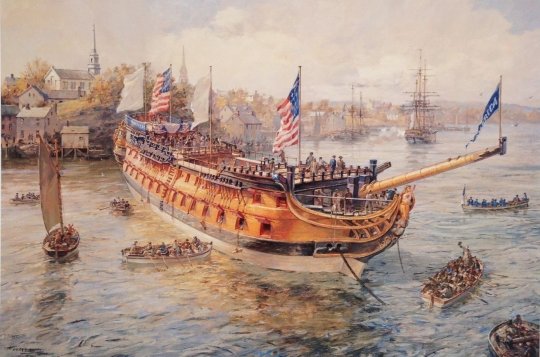
Type: 74-gun Ship of the Line
Laid down: May 1777
Christened/Launched: November 5, 1782
Fate: Scrapped due to dry rot, 1786
Built for the Continental Navy but given to France as a thank you for the support during the American Revolution and to replace their Ship of the Line, Magnifique, which was destroyed during the conflict.
USS AMERICA (IX-41)
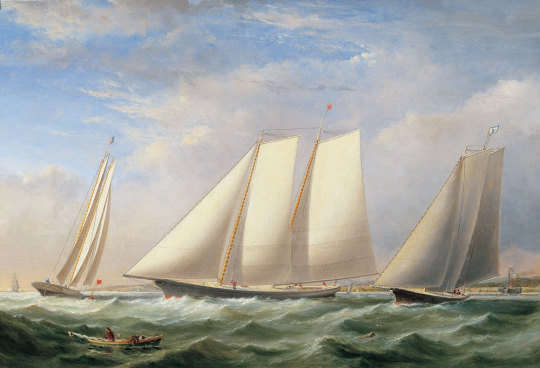

Type: racing yacht
Laid down: November 1850
Christened/Launched: May 3, 1851
Commissioned: 1862
Decommissioned: 1866
Recommissioned: 1923
Decommissioned: 1942
Fate: Scrapped, 1945
This ship had an interesting career. Originally named America. She built in 1951 for a member of the New York Yacht Club and won the the America's Cup international sailing trophy. Then owned by several different owners in Europe, one of which renamed her Camilla, and was brought back across the Atlantic in 1861. Then sold to the Confederate States of America and who used her renamed Memphis, as a blockade runner until they had to scuttle her 1862 when Union forces took Jacksonville, Florida. She was raised and repaired by the US Navy and renamed her USS America. She was used to blockade the CSA and after the war, was laid up until she was decommissioned and then sold in 1873. Refitted as a racing yacht for international racing. Then she changed hands several times until in 1921 she was sold to the America Restoration Fund, which donated her to the U.S. Naval Academy in Annapolis. The shed which housed America collapsed during a heavy snowstorm and destroyed in 1942. She was scrapped in 1945.
USS AMERICA (ID-3006)

Type: Troop Transport
Laid down: unknown
Launched: April 20, 1905
Completed: September 21, 1905
Acquired: July 25, 1917
Commissioned: August 6, 1917
Decommissioned: September 26, 1919
Fate: see below
Originally the Hamburg America Line SS Amerika, she was seized when the US entered World War I and converted from a passenger liner to a troop ship. Used by the US Army for transport duty as USAT America. Turned over to the United States Line in 1920. They operated her until 1930. Turned over the US Army again in 1940 and renamed USAT Edmund B. Alexander. She was used as troop ship until 1949. Sold for scrap in 1957.
USS AMERICA (CV-66)
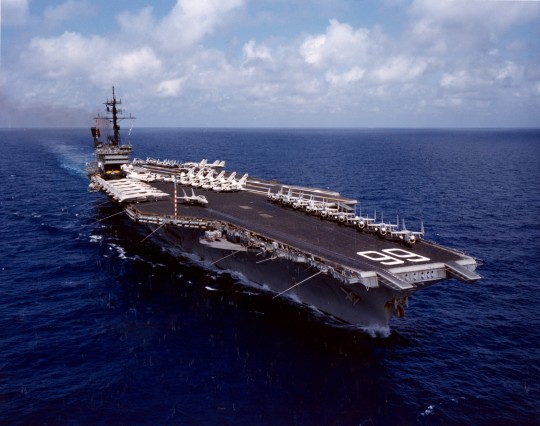

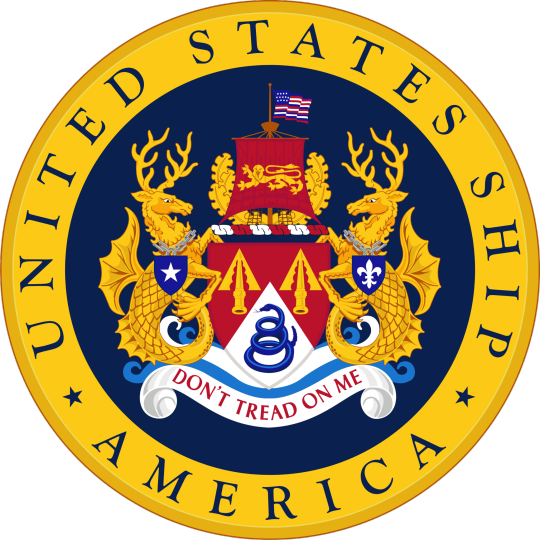
Class: Kitty Hawk Class
Type: Aircraft Carrier
Laid down: January 9, 1961
Launched/Christened: February 1, 1964
Commissioned: January 23, 1965
Decommissioned: August 9, 1996
Nickname: The Big "A"
Motto: Don't Tread on Me
Fate: Scuttled after live-fire testing, May 14, 2005
Originally planned to be the second Enterprise Class Nuclear Powered Aircraft Carrier, problems with the nuclear reactor caused her to be reordered as a Kitty Hawk Class. She made three tours during the Vietnam War, and was part of Desert Shield and Desert Storm. She was scuttle in 2005 after 4 weeks of live fire exercises.
USS AMERICA (LHA-6)

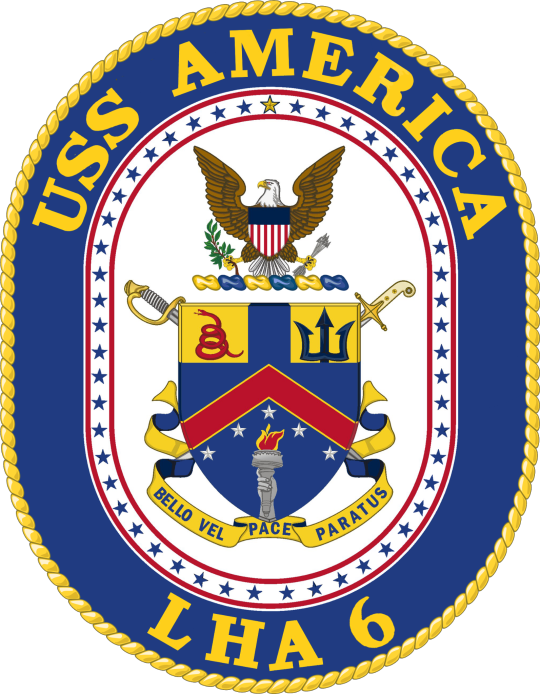
Class: America class
Type: Amphibious Assault Ship
Laid down: July 17, 2009
Launched: June 4, 2012
Christened: October 20, 2012
Commissioned: October 11, 2014
Motto: Bello vel pace paratus (Ready for War or Peace)
The Veterans of USS AMERICA (CV-66) lobbied for CVN-78 to be named America, but the Navy gave the named to the next class of amphibious assault ship instead.
source, source, source
U.S. Naval History and Heritage Command: NH 106683, NH 106552-KN
DN-SC-83-08192
#America#State Ship Series#USS America#USS America (1782)#74-gun ship of the line#ship of the line#USS America (IX-41)#Yacht#USS America (ID-3006)#Ocean liner#Liner#Troop ship#USS America (CV-66)#Kitty Hawk Class#Aircraft Carrier#USS America (LHA-6)#America Class#amphibious assault ship#united states navy#us navy#navy#usn#u.s. navy#my post#July
46 notes
·
View notes
Text
Letters of Outlander Masterlist
I don't know when or if I will get back to this, so I'm posting what I have finished. This is everything through ABOSAA with a touch of Echo. The letters are listed chronologically and then in book order. I’ve put *** next to my favorites. : )

Chronological Order (by date written)
1700′s
John Grey to Benedicta Grey, Voyager Ch. 8, February 15, 1755
John Grey to Harold Grey, Voyager Chapter 10, April 2, 1755
Ian Murray to Jamie, Drums of Autumn Chapter 10, June 1767
Ian Murray to Jamie Fraser (marked private), Drums of Autumn Chapter 10, June 1767
Jamie Fraser to Jenny Murray, Drums of Autumn Ch 34, September 19, 1769 (Part 1)
Jamie Fraser to Jenny Murray (with a note from Young Ian), Drums of Autumn Ch 34, began September 19, 1769 (Part 2)
***Jamie to Brianna, Drums of Autumn Chapter 62, 1770
Young Ian to Jamie Fraser, Drums of Autumn Ch. 70, Received October 1770
John Grey to Jamie Fraser, The Fiery Cross Ch. 30, October 13, 1770
Governor William Tryon to James Fraser, TFC Ch. 7, October 20, 1770
William Tryon to James Fraser, The Fiery Cross Ch. 19, November 22, 1770
Jamie Fraser to Lord John Grey, The Fiery Cross Ch.25, December 1, 1770
Archibald Hayes to Jamie Fraser, The Fiery Cross Ch. 37, January 18, 1771
William Tryon to James Fraser, The Fiery Cross Ch. 55, March 19, 1771
William Tryon to General Thomas Gage, TFC Ch. 56, March 19, 1771
William Tryon to the Regulators, TFC Ch. 61, May 16, 1771
William to Jamie, TFC Ch. 77, 1771
Jenny Murray to Jamie Fraser, TFC Ch. 99, September 16, 1771
Lord John Grey to Jamie Fraser, ABOSAA Ch. 8, April 14, 1773
Jamie to Lord John Grey, A Breath of Snow and Ashes Chapter 17, 1773
Lord John Grey to Claire Fraser, ABOSAA Ch. 20, September 4, 1773
Jamie Fraser to Lord John Grey, ABOSAA Ch. 41, April 2, 1774
Lord John Grey to Jamie Fraser, ABOSAA Ch. 59, 1774?
Jamie Fraser to John Stuart, ABOSAA Ch. 67, November 1, 1774
John Grey to Jamie Fraser, ABOSAA Ch. 76, March 6, 1775
Jamie Fraser to John Grey, ABOSAA Ch. 76, March 16, 1775
Marsali Fraser to Jamie and Claire Fraser, ABOSAA Ch. 79, Spring 1775
Claire and Jamie Fraser to Brianna MacKenzie, Echo Ch. 2, December 31, 1776
Jamie Fraser to Brianna Fraser, Echo Ch. 7, March 2, 1777
1900′s
***Frank Randall to Rev. Reginald Wakefield, Drums of Autumn Ch. 71, 1960′s?
Eric Linklater to Roger Wakefield MacKenzie, Voyager Chapter 7, May 25, 1968
***Claire to Brianna, Voyager Ch 42, October 1968
Book Order
Voyager
Eric Linklater to Roger Wakefield MacKenzie, Voyager Chapter 7, May 25, 1968
John Grey to Benedicta Grey, Voyager Ch. 8, February 15, 1755
John Grey to Harold Grey, Voyager Chapter 10, April 2, 1755
***Claire to Brianna, Voyager Ch 42, October 1968
Drums of Autumn
Ian Murray to Jamie, Drums of Autumn Chapter 10, June 1767
Ian Murray to Jamie Fraser (marked private), Drums of Autumn Chapter 10, June 1767
Jamie Fraser to Jenny Murray, Drums of Autumn Ch 34, September 19, 1769 (Part 1)
Jamie Fraser to Jenny Murray (with a note from Young Ian), Drums of Autumn Ch 34, began September 19, 1769 (Part 2)
***Jamie to Brianna, Drums of Autumn Chapter 62, 1770
Young Ian to Jamie Fraser, Drums of Autumn Ch. 70, Received October 1770
***Frank Randall to Rev. Reginald Wakefield, Drums of Autumn Ch. 71, 1960′s?
The Fiery Cross
Governor William Tryon to James Fraser, TFC Ch. 7, October 20, 1770
William Tryon to James Fraser, The Fiery Cross Ch. 19, November 22, 1770
Jamie Fraser to Lord John Grey, The Fiery Cross Ch.25, December 1, 1770
John Grey to Jamie Fraser, The Fiery Cross Ch. 30, October 13, 1770
Archibald Hayes to Jamie Fraser, The Fiery Cross Ch. 37, January 18, 1771
William Tryon to James Fraser, The Fiery Cross Ch. 55, March 19, 1771
William Tryon to General Thomas Gage, TFC Ch. 56, March 19, 1771
William Tryon to the Regulators, TFC Ch. 61, May 16, 1771
William to Jamie, TFC Ch. 77, 1771
Jenny Murray to Jamie Fraser, TFC Ch. 99, September 16, 1771
A Breath of Snow and Ashes
Lord John Grey to Jamie Fraser, ABOSAA Ch. 8, April 14, 1773
Jamie to Lord John Grey, A Breath of Snow and Ashes Chapter 17, 1773
Lord John Grey to Claire Fraser, ABOSAA Ch. 20, September 4, 1773
Jamie Fraser to Lord John Grey, ABOSAA Ch. 41, April 2, 1774
Lord John Grey to Jamie Fraser, ABOSAA Ch. 59, 1774?
Jamie Fraser to John Stuart, ABOSAA Ch. 67, November 1, 1774
John Grey to Jamie Fraser, ABOSAA Ch. 76, March 6, 1775
Jamie Fraser to John Grey, ABOSAA Ch. 76, March 16, 1775
Marsali Fraser to Jamie and Claire Fraser, ABOSAA Ch. 79, Spring 1775
An Echo in the Bone
Claire and Jamie Fraser to Brianna MacKenzie, Echo Ch. 2, December 31, 1776
Jamie Fraser to Brianna Fraser, Echo Ch. 7, March 2, 1777
LoO Picsets
Part 1
Part 2
Picset 3
#Outlander#Letters of Outlander#Jamie Fraser#Brianna#Lord John Grey#Drums of Autumn#DoA#A Breath of Snow and Ashes#ABOSAA#william ransome#the fiery cross#TFC#Diana Gabaldon#archie hayes#archibald hayes#governor tryon#william tryon#tryon#marsali#mastelist#masterpost#An Echo in the Bone#Voyager#NOT MY WORK WRITTEN BY DIANA GABALDON#JUST A CATALOG
61 notes
·
View notes
Text
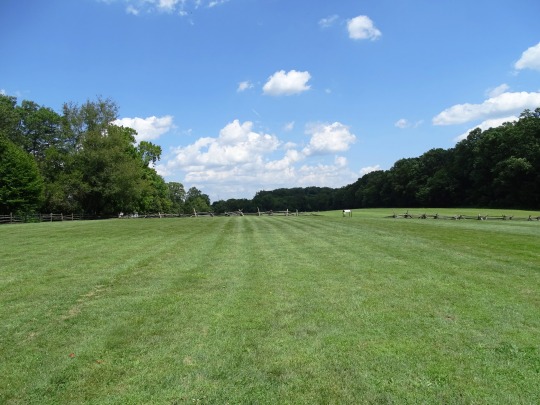




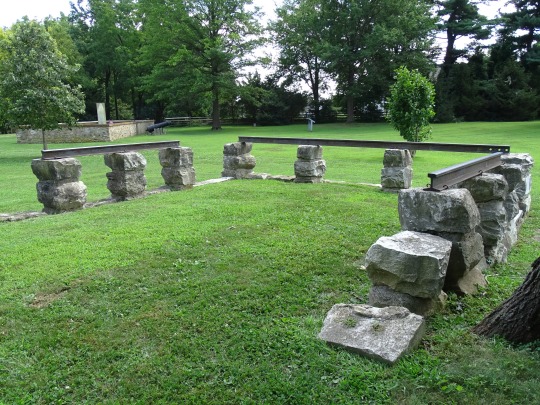

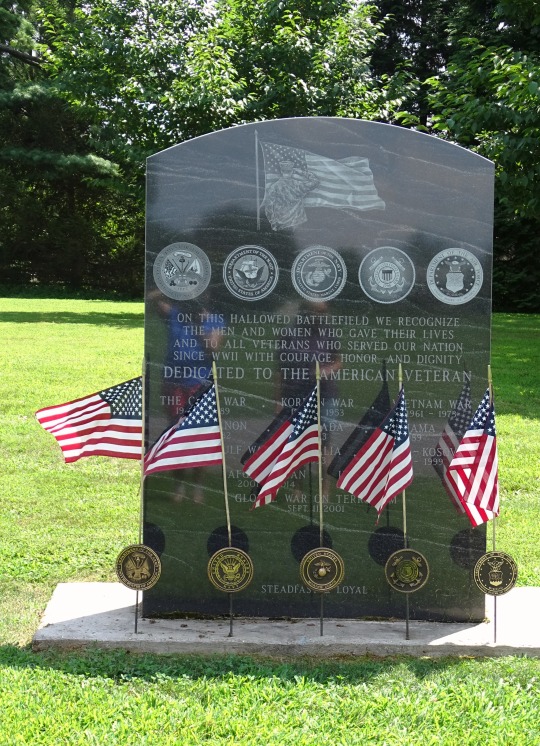
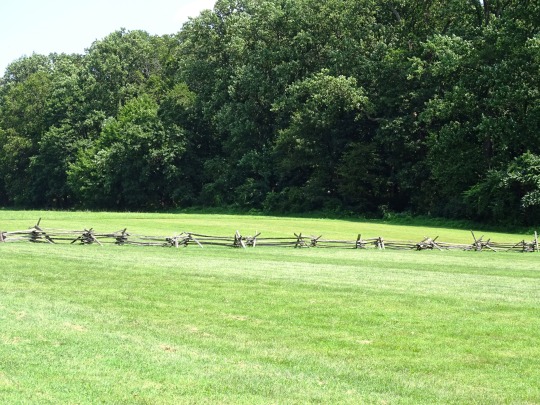





The Battle of Paoli (also known as the Battle of Paoli Tavern or the Paoli Massacre) was a battle in the Philadelphia campaign of the American Revolutionary War fought on September 20, 1777,
#Battle of Paoli#Battle of Paoli Tavern#Battle of Paoli Tavern or the Paoli Massacre#Paoli Massacre#20 September 1777#American Revolutionary War#American War of Independence#Paoli Battlefield Site and Parade Grounds#Mid-Atlantic region#Chester County#Chesco#Paoli Massacre obelisk#Malvern#Philadelphia campaign#Pennsylvania#summer 2019#free admission
1 note
·
View note
Text
Jemmy:
Born November 26, 1765 (makes him a Sagittarius fun fact lol)
Aged 3 Henry said that he was the duplicate of John. ‘Jamie is healthy and clever & seems to be a duplicate of his Elder Brother.’ Henry Laurens to George Appleby, September 26th 1769
Henry also he was ‘a wild, lively, sensible, good natur’d fellow’ so pretty similar to John
21st July 1771 (age 5)Jemmy left America to England with John and Henry.
9th October 1771 Arrived in Falmouth, Cornwall, England
Around 1771/early 1772 (age 6): Henry and Jemmy moved in with Robert Dean at Fludyer Street in Westminster (London)
April 1772 (age 6): Jemmy started school at Winson Green near Birmingham
May 1772 (age 6): Jemmy was left in England whilst his two brothers and father went to mainland Europe.
January 1775 (age 9): John was looking forward to looking after Jemmy in May/June time: ‘ Letters from Walsall from Mr. Stone and our dear little Jemmy, are inclosed_ will you indulge him in his Plan for spending Whitsuntide Holidays? I promise to take great care of him, and shall be glad of an oportunity of having him under my eye for a week or two_” – JL to HL, January 20, 1775
1774 John, Harry and Henry return to England
7th November 1774 Henry travels from Falmouth to Charleston leaving Harry and Jemmy with John to look after them.
Sometime between July-September 1775: The headmaster at Jemmy’s school suffered a stroke so John removed Jemmy from the school. John set out to find a different school for Jemmy. He narrowed it down to a school at Greenwich and another in Kent.
On Monday 4th September 1775 John visited both schools and decided to place Jemmy at Greenwich.
Tuesday 5th September 1775 (age 9): Jemmy was scaling the outside of their house and tried to jump to the landing outside of John’s window but lost his footing and fell. He sustained life threatening injuries and cracked his skull. John arrived back from Kent in time to comfort Jemmy. The doctors figured that the injuries were too severe to save Jemmy and John described it to his uncle, four days later: ‘At some Intervals he had his senses, so far as to be able to answer single Questions, to beckon to me, and to form his Lips to kiss me, but for the most part he was delirious, and frequently unable to articulate. Puking, Convulsions never very violent, and latterly so gentle as scarcely to be perceived, or deserve the Name, ensued, and Nature yielded.’
Henry (Harry) Laurens Jr:
25th August 1763 Henry (Harry) Laurens Jr was born.
At the time of his birth he had an older brother: John Laurens who was 9 years older than Harry, an older sister named Eleanor or Nelly who was 8 years older and another older sister Martha or Patsy who was 4 years older.
1764: When he was one year old his older sister Nelly died
Massey describes Harry as ‘timid and lacking John’s charisma’
In 1770 Henry Laurens describes his son as: ‘ Harry, on the other hand, appeared ‘a little thick Headed, loves marbles, Tops, and Tumbling much more than his Books, ‘
Early 1771: Harry went to London to be taught by Richard Clarke
21st October 1771: He was reunited with John, Henry and Jemmy.
He had a few problems at Richard Clarke’s school including Clarke putting a candle right under Harry’s face and burning his cheek. He also hadn’t done much work for 5 weeks or so.
30th May 1772: Both Harry and John were taken to Geneva to be educated
They stayed with Jean-Antoine Chais and John acted as a sort of surrogate father for Harry
In Geneva under John’s tutelage Harry showed a lot of intellectual promise. Although Massey describes Harry as ‘Timid and lacking John’s charisma’ and seems to think of him as a ‘typical middle child’.
1774: John and Harry were supposed to meet Henry at Geneva but he had a bad gout attack so then he was going to meet them in Paris but somehow John and Harry missed him in Paris and came back to London. But then John left Harry with William Manning (Martha’s dad) to meet Henry in Paris. They decided to go back to England instead of living in Geneva.
They enrolled Harry at Westminster school
I can only assume that Harry lived with John with Charles Bicknell on Chancery Lane
1775: When he was twelve years old his little brother Jemmy died
1776: Harry was still at Westminster School and John was still acting as his guardian
Henry thought about sending Harry to Geneva whilst John was fighting in America. He stayed in London though.
John found him a school although Harry wanted to go back to America.
Late 1776/1777: William Manning said to John that ‘Harry spent the Days of Whitsuntide with us, & the nights [wi]th Mr. Parsons ‘
October 1777: Harry visited Henry who was a prisoner in the Tower of London.
1782: When he was nineteen years old his older brother John died
1784: Returned to America with Henry
1792: Married age 29 to Eliza Rutledge
He had at least 2 children - John Ball Laurens (born 1799) and Edward Rutledge Laurens (born 1806)
He had 459 slaves in total. Imagine being John Laurens’s brother and owning that amount of slaves.
He had lots of money, his estate was valued at $142,510.
Died 27th May 1821, he was buried at the Laurens Cemetry at Mepkin.
60 notes
·
View notes
Note
hi there! can you tell us more about the drama between La Fayette and Lord Carlisle? 👀
Dear @ouiouixmonami,
of course! :-)
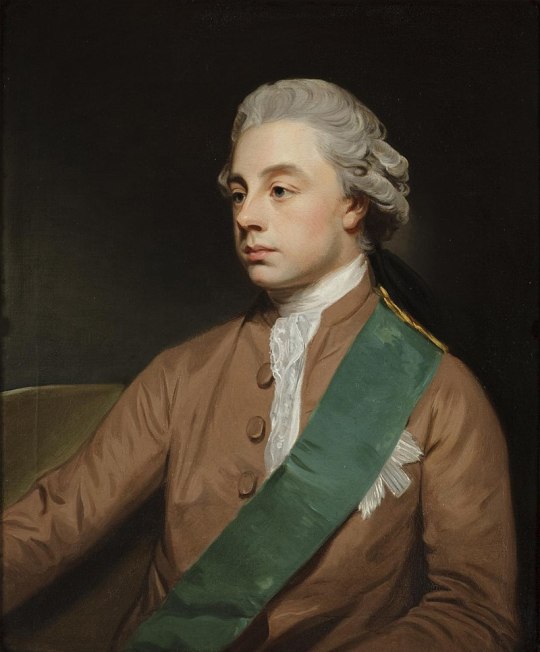
In the second half of 1778, a British peace commission, headed by Frederick Howard, 5th Earl of Carlisle, was send to America to try to broker a peace. Their mission was almost surely doomed to fail, given the instructions they received from their government in England.
Shortly after the arrival of the Commission in America, La Fayette wrote in a letter to Henry Laurens what his opinion upon the matter was:
La Fayette to Henry Laurens, June 12, 1778:
I can not write to York Town without asking my good friend Mr. Henry Laurens how he does, and which are his present ideas upon the arrival of the commissioners appointed for to corrupt a part of the continent, deceive the other, and if possible enslave the whole as far as it is consistent with the present state of affairs. If you were to ask my private opinion I would refer you to the Earl of Abington’s speech, as the candid sentiments of a man who being at the fountain head may give us some knowledge of the true idea they have in Parliament of theyr Ridiculous and deceitfull commission for to grant pardons to the faithfull subjects of George the Third. I understand they have sent five commissioners, ambassadors, or whatever you’ll be pleas’d to call them. (…) I do’nt understand how they did send those commissioners with such instructions as will immediately discover theyr scheme of treachery, deception, tyranny, vengeance, corruption and indeed of every Rascality under the fairest names. That word of pardon is not only abzurd but very insolent. Ah my dear sir, never suffer such a people to approach you. Look down upon them and when ever they’ll want to come near in order to corrupt and deceive, keep them alwai's at a distance, and never suffer a word to be spoken, or a letter to be writen to them till independency will be aknowledged by Parliament, the troops with drawn, even from Canada, for Canada is necessary to the liberties of America.
He then went on to state his opinion about the different members of the commission:
I have reserv’d the Earl of Carlisle for the last. He is a fine gentleman, very well powdered, and a man of bon goust. He began by Ruining his own fortune, and wanted to get the Reputation of a man belov’d by the ladies. While I was in England he was much in love with a young fair dutchess and pretty ill treated by her. However he is a good poet.
Idzerda Stanley J. et al., editors, Lafayette in the Age of the American Revolution: Selected Letters and Papers, 1776–1790, Volume 2, April 10, 1778–March 20, 1780, Cornell University Press, 1979, p. 74-76.
While his judgment of Carlisle may sound a bit harsh, it was indeed the most forgiving. It is also quite interesting to see that La Fayette apparently has met Carlisle during his trip to London in 1777.
The Commission wrote several letters to Congress and published statements. In one of these statements, a manifesto written on August 26, 1778 and printed by the Pennsylvania Packet or the General Advertiser on September 12 of that year, they warned America to lean not too heavily on France. France was, by the commission’s arguments, no reliable ally because their were no religious or civil liberties in France. They also wrote that France’s only wish was to prolong the war to weaken England and not to settle it. The most offending passage in La Fayette’s eyes was the accusation that “the designs of France, the ungenerous motives of her policy, and the degree of faith due to her professions, will become too obvious to need any further illustration.” That was the absolute final straw for La Fayette and he began to toy with the idea of challenging Carlisle as the head of the commission to a duel. Before doing so, he sought advice both from George Washington and from Comte d’Estaing, the French Admiral who had just arrived with the French troops.
La Fayette to the Comte d’Estaing, September 13, 1778:
It is a matter of the nation’s honor not to let it pass in silence. Lord Carlisle is the president of those gentlemen (…) I am going to write him a billet-doux and propose to him an exemplary correction in the sight of the British and American armies. I have nothing very interesting to do here, and even while killing Lord Carlisle, I can make some more important arrangements at White Plains. I flatter myself that General Washington will not disapprove of this proposal, and I am sure that it will have a good effect in America.
Idzerda Stanley J. et al., editors, Lafayette in the Age of the American Revolution: Selected Letters and Papers, 1776–1790, Volume 2, April 10, 1778–March 20, 1780, Cornell University Press, 1979, p. 182.
La Fayette to George Washington, September 24, 1778:
I am going to Consult your excellency upon a point in which I not only want your leave and opinion as the Commander in chief, but also your Candid advice as the man whose I have the happiness to be the friend—in an adress from the British Commissaries to Congress, the first one after jonhstone was excluded, they speack in the most di[s]respectfull terms of my Nation, and Country—the whole is undersign’d by them and more particularly by the president lord Carlisle—I am the first french officer in Rank of the american army, I am Not unknown to the British, and if Somebody must take Notice of Such expressions, that advantage does, I believe, belong to me—do’nt you think, my dear general, that I schould do well, to write a letter on the Subject to lord Carlisle, where I Should Notice his expressions in an unfriendly manner—I have mentionn’d some thing of that design to the Count d’estaing but want intirely to fix my opinion by yours which I instantly beg as soon as you will find it Convenient.
“To George Washington from Major General Lafayette, 24 September 1778,” Founders Online, National Archives, [Original source: The Papers of George Washington, Revolutionary War Series, vol. 17, 15 September–31 October 1778, ed. Philander D. Chase. Charlottesville: University of Virginia Press, 2008, pp. 118–119.] (02/35/2023)
We see that La Fayette’s passion had considerable cooled down by the time he wrote Washington. Washington replied in early October.
Washington to La Fayette, October 4, 1778:
The generous Spirit of Chivalry, exploded by the rest of the World, finds a refuge—My dear friend—in the sensibility of your Nation only—But it is in vain to cherish it, unless you can find Antagonists to support it; and however well adapted it might have been to the times in which it existed, in our days it is to be feared that your opponent, sheltering himself behind modern opinion, and under his present public Character of Commissioner, would turn a virtue of such ancient date, into ridicule—Besides, supposing his Lordship accepted your terms—experience has proved, that chance is as often, as much concerned in deciding these matters as bravery—and always more than the justice of the Cause; I would not therefore have your life, by the remotest possibility, exposed, when it may be reserved for so many greater occasions. His Excellency the Admiral I flatter myself, will be in Sentimt with me; and, as soon as he can spare you, send you to head Quarters, where I anticipate the pleasure of seeing you.
“To George Washington from Major General Lafayette, 24 September 1778,” Founders Online, National Archives, [Original source: The Papers of George Washington, Revolutionary War Series, vol. 17, 15 September–31 October 1778, ed. Philander D. Chase. Charlottesville: University of Virginia Press, 2008, pp. 118–119.] (02/25/2023)
It is interesting that Washington mentions d’Estaing here because the two men had a four letter long discussion about the subject. The Admiral wrote to Washington on September 25, 1778, to inquire after his opinion of the proposed duel. Washington replied on October 2, 1778 that until now he had not been aware of La Fayette’s sentiments. To that, d’Estaing replied with a detailed explanation why he is against the duel.
Comte d’Estaing to George Washington, October 20, 1778:
I had the honor of asking you whether you permitted him to send his Cartel to Lord Carlisle to satisfy myself whether you were informed of it—you were so kind as to acquaint me that you had not seen the Cartel1—I thought from that circumstance that you would forbid the execution of it—I am still persuaded that this is the case—Such marks of zeal, bravery and sensibility are never authorised in Europe by its Generals—they might fruitlessly rob the respective nations of their best subjects—Besides, Embassadors, Commissioners and men in office—Are supposed to speak only in consequence of orders which they have received—as public organs they owe an account only to their own government of the things which they hazard—Nations revenge their own injuries—those who have most reason and Strength on their side are the most sparing in opprobrious terms, and despise them—they respect their enemies while they endeavour to subdue them; they surpass them in wisdom when they refrain from such offensive terms; which one would think should be only the useless resource of those who would dissemble their injustice: I could not then but presume that Lord Carlisle would not accept a Cartel, which he would have done extremely well to refuse—Older than Mr de la fayette, the experience which age gives, tranquilised me upon the two subjects which I have just submitted to Your Excellency, and which made me regard the Cartel ’till now as almost null—it appeared to me a consequence of the interesting Character which led this brave and amiable frenchman into the service of the United States—to have entreated your interposition in this affair would have appeared like a doubt of your doing it. the delicacy of my countryman might likewise have been wounded, if it should have been known that your Refusal had been solicited by me—I do not hesitate however Sir to make the request; I am this moment informed that Genl Hancock told Mr de choin yesterday that the English Commissioner had provided himself with a Substitute; can he have been guilty of choosing a bully! it is impossible that you should have suffered a doubtful expression in this cartel, to have had such an effect—This Challenge can only regard Mylord Carlisle and could not have been construed otherwise—Your Excellency certainly will not have suffered it (…)
“To George Washington from Vice Admiral d’Estaing, 20 October 1778,” Founders Online, National Archives, [Original source: The Papers of George Washington, Revolutionary War Series, vol. 17, 15 September–31 October 1778, ed. Philander D. Chase. Charlottesville: University of Virginia Press, 2008, pp. 479–480.] (02/25/2023)
Washington replied on October 24, 1778, that he was of the exact same opinion as the Admiral and that he had just communicated this opinion to La Fayette:
The coincidence between Your Excellencys sentiments respecting the Marquis de la fayettes cartel, communicated in the letter with which you honored me the 20th and those which I expressed to him on the same subject; is peculiarly flattering to me—I am happy to find that my disapprobation of this measure, was founded on the same arguments which in Your Excellencys hands acquire new force and persuasion. (…) I however continued to lay my friendly commands upon him, to renounce his project, but I was well assured that if he determined to persevere in it, neither authority nor vigilance would be of any avail to prevent his message to Lord Carlisle. And tho his ardour was an overmatch for my advice and influence, I console myself with the reflexion that his Lordship will not accept the challenge and that while our friend gains all the applause which is due to him for wishing to become the champion of his country; he will be secure from the possibility of such danger as my fears might otherwise have raised for him—by those powerful barriers which shelter his lordship, and which I am persuaded he will not in the present instance violate.
“From George Washington to Vice Admiral d’Estaing, 24 October 1778,” Founders Online, National Archives, [Original source: The Papers of George Washington, Revolutionary War Series, vol. 17, 15 September–31 October 1778, ed. Philander D. Chase. Charlottesville: University of Virginia Press, 2008, pp. 551–552.] (02/25/2023)
While we see therefore, that d’Estaing was not in favour of the duel, La Fayette would later write in his Memoirs that he had the Admirals full support.
Despite Washington’s refusal to grant La Fayette leave to fight a duel, La Fayette did challenge Carlisle anyway. He wrote to the Earl on October 5, 1775:
Until now, milord, I believed that I would have to deal only with your generals, and I hoped for the honor of seeing them only at the head of the troops which are respectively entrusted to us. Your letter of August 26 to the Congress of the United States and the insulting sentence regarding my country to which you subscribed your name could alone have given me something to clear up with you. I do not deign to deny it, milord, but I wish to chastize it. It is you, as head of the commission, whom I summon to make amends to me as public as was the offense and the denial that follows it will be. That refutation would not have been so delayed had the letter reached me sooner. Since I am obliged to be away for a few days, I hope to find your answer upon my return. M. de Gimat, a French officer, will make any arrangements in my behalf that are agreeable to you. I do not doubt that, for the honor of his compatriot, General Clinton will willingly countenance it. As for me, milord, all terms are good, provided that to the glorious advantage of being born a Frenchman, I shall add that of proving to a man of your nation that no one will ever attack mine with impunity.
Idzerda Stanley J. et al., editors, Lafayette in the Age of the American Revolution: Selected Letters and Papers, 1776–1790, Volume 2, April 10, 1778–March 20, 1780, Cornell University Press, 1979, pp. 187-189.
Lord Carlisle replied to the Challenge on October 11, 1778 and, as predicted by Washington and d’Estaing, refused to accept the challenge:
I have received Your Letter transmitted to me from Mons. de Gimat, and I confess I find it difficult to return a serious Answer to its Contents. The only one that can be expected from me as the King’s Commissioner, and which You ought to have known, is that I do and ever shall consider myself solely answerable to my Country and my King and not to any Individual for my public Conduct and Language. As for any Opinions or Expressions contained in any publication issued under the Commission in which I have the Honour to be named, unless they are retracted in Public, You may be assured I shall never in any Change of Situation be disposed to give an Account of them much less recall in Private. The Injury alluded to in the Correspondence of the King’s Commissioners to the Congress I must remind You is not of a private Nature, and I conceive all national Disputes will be best decided by the Meeting of Admiral Byron and the Count d’Estaign.
Idzerda Stanley J. et al., editors, Lafayette in the Age of the American Revolution: Selected Letters and Papers, 1776–1790, Volume 2, April 10, 1778–March 20, 1780, Cornell University Press, 1979, p. 189.
I have to admit that I really, really love Carlisle’s answer! But alas, La Fayette did not. He wrote, rather furious, to d’Estaing on October 20, 1778, that:
Lord Carlisle made me a very tardy reply, in which he escapes by means of diplomatic prerogatives. His prudence even goes so far as to provide for the time when the commission has ceased and I might take up my desire to correct the commissioner. He claims not to be bound to any reckoning of this kind.
Idzerda Stanley J. et al., editors, Lafayette in the Age of the American Revolution: Selected Letters and Papers, 1776–1790, Volume 2, April 10, 1778–March 20, 1780, Cornell University Press, 1979, p. 191-193.
While La Fayette was rather displeased with the turn of events at first, he later, in his Memoirs, acknowledged, that Carlisle had been in the right and that it was good of him to refuse the challenge.
That is the context surrounding the proposed Carlisle-La Fayette-duel and the only time that La Fayette actually challenged somebody to a duel instead of just contemplating the thought.
I hope you have/had a lovely day!
#ask me anything#ouiouixmonami#marquis de lafayette#la fayette#french history#american history#american revolution#george washington#1777#1778#british history#lord carlisle#frederick howard 5th earl of carlisle#comte d'estaing#letters#founders online#dueling#art#1780#george romney#henry laurens
22 notes
·
View notes
Text

I posted 9,896 times in 2021
8119 posts created (82%)
1777 posts reblogged (18%)
For every post I created, I reblogged 0.2 posts.
I added 743 tags in 2021
#tom hiddleston - 379 posts
#loki - 127 posts
#zawe ashton - 40 posts
#instagram - 34 posts
#betrayal - 33 posts
#happy birthday tom - 31 posts
#tom through the years - 28 posts
#submission - 27 posts
#tony awards - 22 posts
#the essex serpent - 22 posts
Longest Tag: 115 characters
#also remind me not to theorize about anything in the middle of the night and then queue it to post three days later
My Top Posts in 2021
#5
I love how Mark Ruffalo keeps in character in his comments on Loki posts. twitter,com/Kim_Huynh99/status/1414740508312686592

613 notes • Posted 2021-07-13 00:46:37 GMT
#4


See the full post
845 notes • Posted 2021-05-12 12:41:42 GMT
#3

862 notes • Posted 2021-10-23 20:22:24 GMT
#2
A Very Loki Affair - Our Chat with Tom Hiddleston

Let’s not pretend that the Avenger’s most persistent villain and antihero isn’t the best character in the Marvel universe. Tom Hiddleston has had the great fortune of being able to play a comedic relief, while being taken absolutely seriously. While his face has become synonymous with Loki, he isn’t being typecast anytime soon.
He debuted in the movies in 2007 with Unrelated, and became a household name just four years later in 2011 when he landed his role as Loki in the first Thor movie. While Disney has been paying his bills for the past decade, he’s also found time to star in other such films like Crimson Peak and Kong: Skull Island. In 2016, he starred and was an executive producer in The Night Manager, for which he scored his first Golden Globe for best actor in a Miniseries or Television Film.
Disney knows a good thing when they see it, and now Loki has his own show. We had a chat with Hiddleston about what it takes to maintain a character for so long, how to remain faithful to the role, and what we should expect from the series.
What was your reaction when you were approached about doing a “Loki” series?
It was so exciting. I remember after Infinity War was released having a conversation with everybody at Marvel Studios. And we just put our heads together and thought, right, I’ve done six movies as Loki. And those movies really are the Thor saga. They’re all about Loki’s connection to Thor, his connection with his family. Where do we go now? What have we not done? What’s new? What’s original?
See the full post
909 notes • Posted 2021-07-02 22:25:28 GMT
#1

NEW YORK, NEW YORK - SEPTEMBER 26: Tom Hiddleston and Zawe Ashton attend the 74th Annual Tony Awards at Winter Garden Theatre on September 26, 2021 in New York City. (Photo by Jenny Anderson/Getty Images for Tony Awards Productions)
981 notes • Posted 2021-09-27 01:39:48 GMT
Get your Tumblr 2021 Year in Review →
12 notes
·
View notes
Text
Napoleon’s family - Birthday Calendar
Posting this on behalf of @northernmariette who went to the trouble to put this calendar together :
January
Elisa, 3 January 1777
Joseph, 7 January 1768
March
Napoléon II, 20 March 1822
Caroline, 25 March 1782
Charles (Carlo), 27 March 1746
April
Hortense, 10 April 1783
May
Lucien, 21 May 1775
June
Joséphine, 23 June 1763
August
Napoléon, 15 August 1769
Laetitia, 24 August 1750
September
Louis, 2 September 1778
Eugène, 3 September 1781
October
Pauline, 20 October 1780
November
Jérôme, 15 November 1784
December
Marie-Louise, 12 December 1791
-
On January 1, 1800, they were respectively:
if Charles had lived, hé would have been 53
Laetitia, 49
Joséphine, 36
Joseph, 31
Napoléon, 30
Lucien, 24
Elisa, 22
Louis, 21
Pauline, 19
Eugène, 18
Caroline, 17
Hortense, 16
Jérôme, 15
Marie-Louise, 8
Napoléon II, still an ovule.
26 notes
·
View notes
Photo

📷: pamwmsn.tumblr.com
Both of the cannons now sitting in Stephen Elliott Park in Beaufort came off of the British ship Vigilant.

The ship was originally a merchant vessel named Grand Duchess of Russia and served as a transport until she was purchased for use by the British navy and renamed Vigilant in 1777. She served in operations against Philadelphia during the American Revolution and, in 1779, came south to support British campaigns in Georgia and South Carolina.
Vigilant sported 20 guns, with a crew of 180 sailors. She was a warship that lived up to the name Vigilant. She took part in the raid up the Broad River in February of 1779, supported Augustine Prévost’s Raid through the Beaufort District in May of 1779, and served as a guard ship at Beaufort until the British evacuated the town in September 1779 when she escorted the garrison as far as Hilton Head where she was left to guard a British encampment while the majority of the troops continued on to Savannah where they assisted in repulsing the combined French and Patriot attack.
She returned to Beaufort in May of 1780 when Beaufort was reoccupied. By now she was showing the strains of battle and her armament was removed and placed as fortifications. Sometime in 1780 she was declared derelict and burned. Some of the cannons were taken off of her and stationed around Beaufort’s downtown area and set ready to defend an attack, if needed.
The two cannons at Elliott Park are what remains behind today from that impressive ship.
They served Beaufort during the War of 1812 then sat resting afterward. During the Civil War they were not in use at all but could be seen at the entrance of our Beaufort Arsenal.
They eventually made their way to Stephen Elliott Park where many locals and visitors like to sit and enjoy the magnificent view.
1 note
·
View note